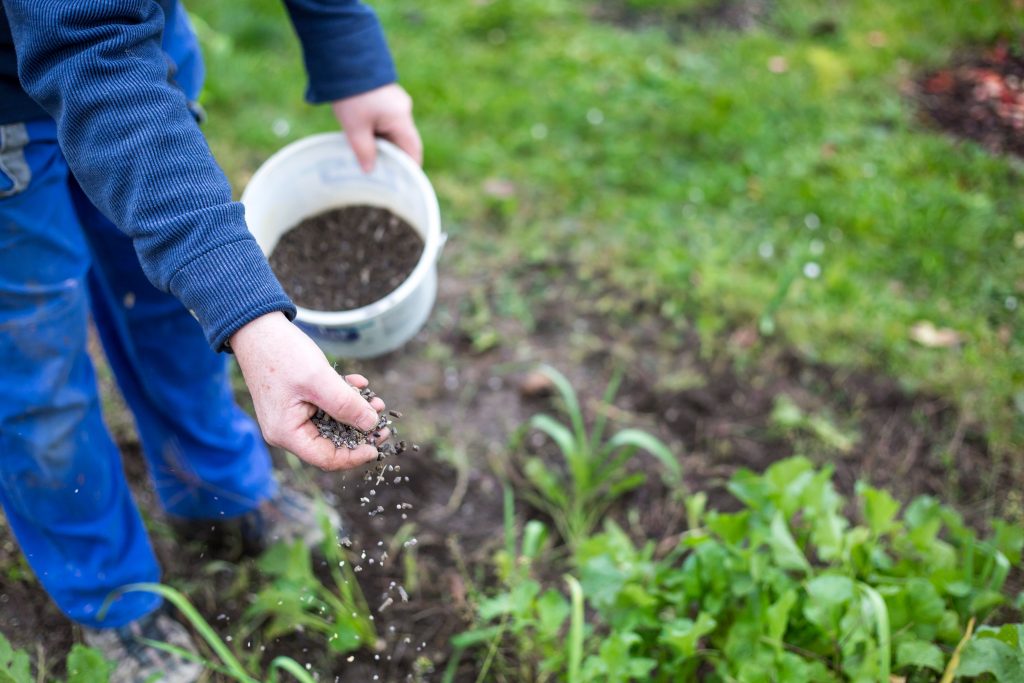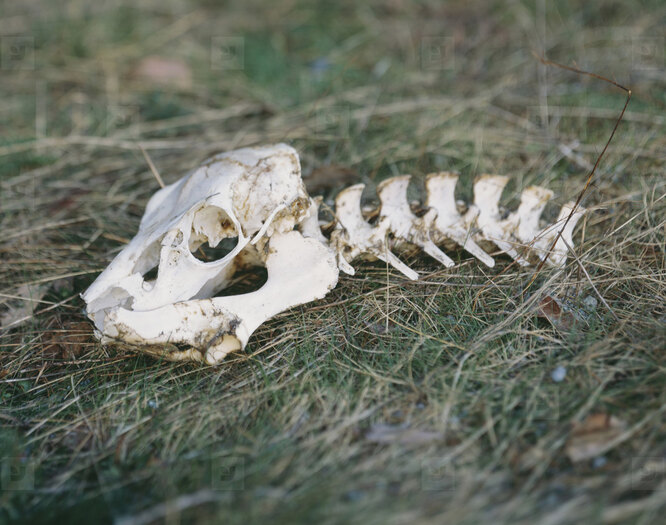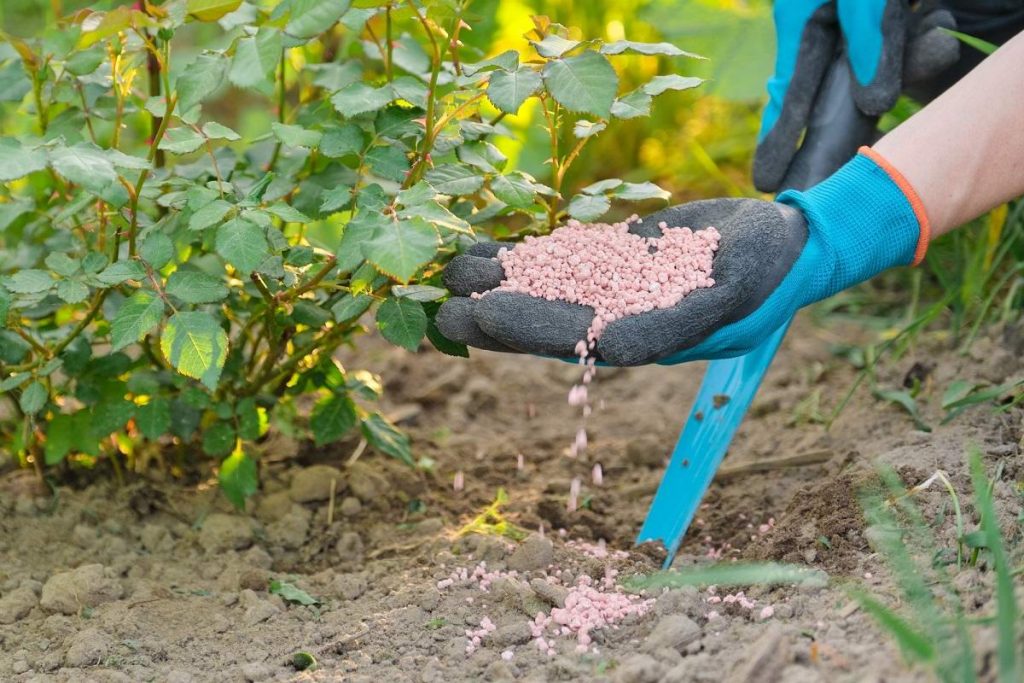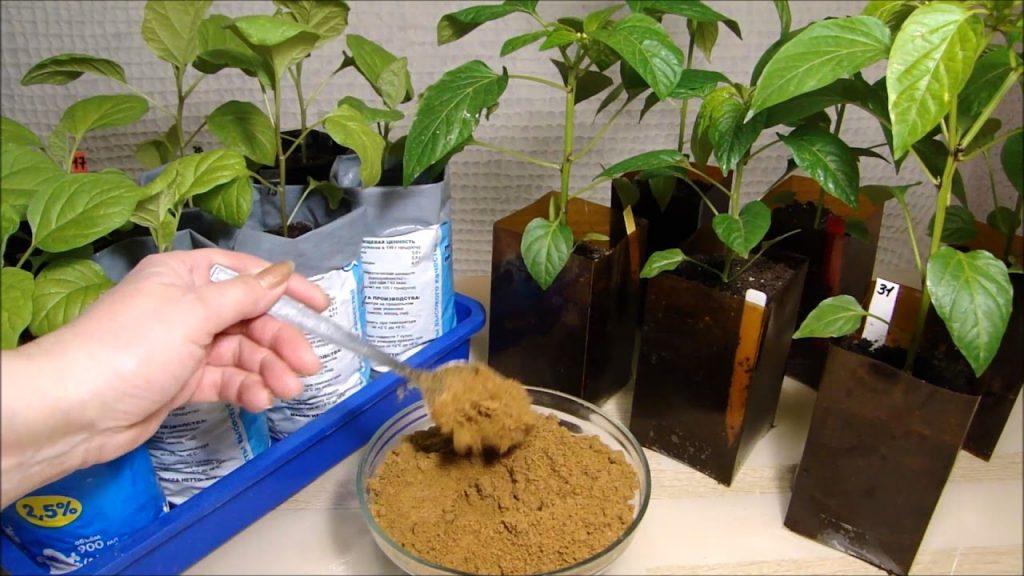Organic bone meal fertilizer is a common soil amendment and is considered by many to be a good fertilizer. It is always added when planting plants, and it is claimed that it helps them take root after transplantation, improving root growth.
“Is the plant not blooming? Add bone meal to get more flowers!” It sounds tempting, but are these claims real or just a myth?
Let’s figure out whether bone meal is useful as a garden fertilizer.
To obtain a good harvest of vegetables or fruits, the soil on which the plants grow must be well-fertilized. Many vegetable growers, in addition to manure and ash traditionally used in this case, also use other organic fertilizers, for example, bone meal. But is it as useful as the sellers say?
Table of Contents
- 1 What is Bone Meal Fertilizer?
- 2 What Are The Benefits Of Bone Meal Fertilizer?
- 3 Types Of Phosphorus In Soil
- 4 Movement Of Phosphorus In The Soil
- 5 Organic Bone Meal Fertilizer And Soil Acid-base Balance
- 6 Bone Meal Fertilizer And Mycorrhizal Fungi
- 7 Does Bone Meal Fertilizer Enhance Root Growth?
- 8 Is Bone Meal Fertilizer A Bloom Enhancer?
- 9 Does Your Soil Need More Phosphorus?
- 10 How To Use Bone Meal Fertilizer Correctly
- 10.1 Bone Meal Fertilizer For Tomatoes And Other Vegetable Plants
- 10.2 Bone Meal Fertilizer for Potatoes
- 10.3 Bone Meal Fertilizer For Roses
- 10.4 Bone meal Fertilizer for strawberries
- 10.5 Bone Meal Fertilizer For Bulbous Flowers
- 10.6 Bone Meal Fertilizer For Berry Bushes And Fruit Trees
- 10.7 Bone Meal Fertilizer For Indoor Plants
- 10.8 Bone Meal For Liquid Fertilizers
- 11 Conclusion
What is Bone Meal Fertilizer?
In the early 1800s, farmlands were intensively farmed, resulting in soil depletion and declining crop yields. To increase the amount of nutrients, some farmers collected animal bones to crush them and fertilize the soil.

For much of the 19th century, the commercial trade in bone meal was seen as an integral part of agriculture. Originally, the bone meal was made by crushing whole bones containing marrow, tendons, pieces of meat, and fat.
These extra pieces added important nitrogen to the product, but the modern bone meal fertilizer is steamed at high temperatures to remove most of the nitrogen so it can be used to make other products, such as gelatin.
By the end of the 19th century, it became apparent that bone meal fertilizer did not make a significant difference in crop yields, and agriculture switched to the use of synthetic superphosphate, which is produced by digesting bones with acids.

NPK (NPK fertilizers are mineral complexes containing 3 main components: nitrogen, phosphorus, and potassium) of agricultural bone meal varies: nitrogen ranges from 0 to 4%, and phosphorus – 8-15%.
It also contains about 12% calcium, 0.3% potassium, 0.4% sulfur, and 0.5% magnesium, as well as some heavy metals ( zinc, copper, lead, cadmium, nickel, mercury, and chromium ).
What Are The Benefits Of Bone Meal Fertilizer?

Fertilizers are used to replenish missing nutrients in the soil, but bone meal fertilizer is not a universal remedy:
- If you need potassium, bone marrow is a terrible fertilizer because it contains very little potassium (0.3%).
- Most nutrient deficiencies are related to nitrogen, and bone meal is a poor source (0 to 4%).
- Most soils have enough calcium, but if your soil is deficient, bone meal is a good source of calcium (about 12%).
- Organic bone meal fertilizer contains fairly high levels of phosphorus (8-15%), but again, most garden soils have plenty of it.
A bone meal is a good fertilizer only if your soil needs calcium or phosphorus.
Types Of Phosphorus In Soil

Many gardening resources talk about the benefits of phosphorus for plants and discuss ways to add it to the soil. But almost none of them discuss what happens when phosphorus is added to soil, which is critical to understanding fertilizer use.
Phosphorus is relatively stable in the soil and is not lost through volatilization and leaching. The high stability (low solubility) of phosphorus in soils is the direct cause of the lack of soil phosphorus for plants.
Phosphorus in soil exists in three different forms:
- Soluble phosphorus – dissolved in the soil and available for absorption by plants.
- Labile phosphorus – retained by soil particles in a free state. Labile phosphorus acts as a reserve of soluble phosphorus and is a reserve for the subsequent supply of phosphorus to plants
- Stable phosphorus – sparingly soluble compounds firmly embedded in the soil, make up most of the free phosphorus in the soil.

Plants can access soluble and labile phosphorus through their root systems. As soluble phosphorus is consumed, some of the labile phosphorus is converted into soluble phosphorus so that it is always available to plants.
Organic bone meal fertilizer is primarily composed of insoluble phosphorus, and adding it to the soil increases the amount of labile and stable phosphorus. It has virtually no effect on the soluble form of phosphorus.
Movement Of Phosphorus In The Soil

If you sprinkle a little phosphorus on the surface of the soil, how quickly will it reach the roots of the plants?
The nitrogen in fertilizers moves through the soil very quickly and reaches the roots in a few hours or days, depending on water flow. Potassium also moves quickly through the soil, but more slowly than nitrogen.
Phosphorus moves at glacier speeds, on the order of several mm per year. Adding soluble phosphorus fertilizer to the soil surface will take years to reach the roots. Adding organic bone meal fertilizer to the soil this way is even slower.
Unless you are planning for 10 years, adding bone meal fertilizer to the surface of the soil is a waste of time.
Organic Bone Meal Fertilizer And Soil Acid-base Balance

- bone meal fertilizer added to alkaline soil remains in an insoluble form ( stable Phosphorus ), which will not benefit the plants, but will only increase the alkaline content of the soil.
- In acidic soil, bone meal is slowly converted into soluble phosphorus. If there is not enough Phosphorus in acidic soil, it is beneficial for plants, but if the level is high, then soluble phosphorus is quickly converted to labile and then to stable phosphorus, where it does not benefit plants.
- Very acidic soil may have a different problem. At pH values below 6, more iron and aluminum are available, which combine with phosphorus to form insoluble phosphate compounds, thereby reducing the amount of phosphorus available to plants.
Therefore, without a chemical analysis of the soil for pH, it is pointless to believe the statement that bone meal reduces the acidity of the soil.
Bone Meal Fertilizer And Mycorrhizal Fungi

Soil contains a limited amount of soluble phosphorus, and it is difficult for plants to get enough of it. To solve this problem, most plants enter into symbiotic relationships with mycorrhizal fungi. Fungi are better at extracting phosphorus from the soil and transporting it to plant roots in exchange for sugars.
What Happens If You Add Too Much Bone Meal To Your Soil?
In alkaline or neutral soil, nothing will happen because the phosphorus will not become soluble.
In acidic soil, bone meal can increase phosphorus levels to high levels. Now the plants have easy access to the trace element, so they stop establishing connections with fungi.
The fungi lose their carbon source (sugar) and die. This is one of the reasons why it makes no sense to add mycorrhizal fungi to acidic soil fertilized with phosphorus.
Does Bone Meal Fertilizer Enhance Root Growth?

You see this statement all the time in gardening circles, but it is a myth.
Plants need all the essential nutrients to grow leaves, stems, flowers, fruits, and even roots. One nutrient is not more important than another, but they are used in different amounts.
If there is too little of a nutrient such as phosphorus, all parts of the plant will suffer. In this case, adding phosphorus will lead to increased growth – in all parts of the plant, not just in the roots.
With higher levels of phosphorus and insufficient levels of everything else, roots grow less well because they don’t get all the nutrients they need.
Bone meal fertilizer should not be added to soil in hopes of growing more roots.
Is Bone Meal Fertilizer A Bloom Enhancer?

It is a common myth that high phosphorus fertilizer increases flowering in plants.
Many such “bloom enhancers”, including bone meal, are marketed to increase the number of flowers, but they simply don’t work for the same reason that they don’t help increase the number of roots.
Does Your Soil Need More Phosphorus?

Phosphorus is regularly added to agricultural soil to increase crop yields. This convinced gardeners that they needed to sprinkle phosphorus on their beds, but this was rarely the case except in very acidic sandy soils. Most other garden soils do not benefit from adding phosphorus. The only way to know if you have a phosphorus deficiency is to have your soil tested chemically.
You already know that most garden soils have enough phosphorus and calcium, in which case bone meal does not provide any benefit. If these nutrients are needed, synthetic phosphorus, such as superphosphate, will release the micronutrient much faster. It is better to add calcium in other forms, for example, in the form of lime.
How To Use Bone Meal Fertilizer Correctly

You must use phosphate-mobilizing bacteria; they can be found in specialized preparations. These bacteria will make the phosphorus from the bone meal available to the plants.
Without phosphate mobilizers, adding bone meal fertilizer to the soil is a waste of time and money.
Most soils do not need more phosphorus or calcium. In neutral or alkaline soil, it will not increase the amount of phosphorus available to plants.
If you have very sandy and acidic soil and you need phosphorus or calcium, there are better synthetic options, such as superphosphate.
Excess phosphorus leads to environmental pollution when it seeps into rivers and lakes. Bone meal does not result in increased flowering or better root growth.
Bone Meal Fertilizer For Tomatoes And Other Vegetable Plants

When planting tomato seedlings, 1-3 tbsp should be added to the hole. l. flour and lightly mix it with the soil. This phosphorus fertilizer for tomatoes will last for the whole season. Also, bone meal as a fertilizer for tomatoes can be applied in the fall at the rate of 100-200 grams per “square” of bed.
But remember that at first, the tomato will need fairly high doses of nitrogen, so feeding with flour alone is not enough. The same applies to other vegetable plants, including root vegetables.
Bone Meal Fertilizer for Potatoes

For potatoes, applying this fertilizer to each hole is quite labor-intensive, so most often the plot is dug up in the fall, adding 100-200 grams per “square”.
Bone Meal Fertilizer For Roses
For good survival of roses, when planting, add from 50 to 150 grams of flour to each hole. Once every three years you can feed adult bushes: apply 50-100 grams of fertilizer to the root zone and mulch. This will contribute to the development of a strong root system and abundant flowering.

Note that bone meal is also useful for other flowers. It is best used during the first spring feeding.
Bone meal Fertilizer for strawberries

When preparing a new bed for strawberries, bone meal as a fertilizer can be applied either while digging the bed at the rate of 300 grams per “square”, or in each hole at the rate of 20-30 grams per plant.
For adult plants, this fertilizer is ideal as a top dressing after fruiting or during the flowering period (10-20 grams).
Bone Meal Fertilizer For Bulbous Flowers

Very often, bone meal fertilizer is used as a fertilizer for bulbous flowers – daffodils, tulips, and lilies like Kaffir, Crinum…, since this fertilizer stimulates root regrowth and ensures the rooting of the bulbs. To do this, 1-2 tablespoons of flour are mixed with the soil, after which the bulb itself is planted.
Bone Meal Fertilizer For Berry Bushes And Fruit Trees

When transplanting or planting berry bushes, 50-150 grams of flour should be added to the hole, and adult plants can be fed with this fertilizer in the same amount once every three years.
Phosphorus fertilizing is very effective after the fruiting of berry bushes, when they need to restore strength, lay buds for the next year, and prepare for winter.
Fruit trees are also fed with bone meal but in larger doses: 200-250 grams when planting or replanting, or once every three years.
Bone Meal Fertilizer For Indoor Plants

When preparing soil for indoor plants, add 1 gram of flour per kilogram of soil – this will help the plant take root and promote abundant flowering.
If you’re looking into alternative fertilizers for your indoor plants, like cactus fertilizer, this guide is customized specifically for your needs: Cactus Fertilizer: The Ultimate Guide to Selection and Application
Bone Meal For Liquid Fertilizers
You can prepare a liquid fertilizer from bone meal: pour 100 grams of flour into 2 liters of hot water, leave the mixture for about a week, stirring regularly, and then filter. The extract is diluted with 4 buckets of water – and an excellent liquid phosphorus fertilizer is ready!
If you pour this mixture on fruit trees, shrubs, tomatoes, eggplants, and peppers a couple of weeks before harvesting, the berries, fruits, and vegetables will be much tastier and sweeter.
Conclusion

In conclusion, organic bone meal for plants is a wonderful fertilizer, but it cannot be called complete. When planting plants in spring, adding only flour to the holes will probably not be enough: there is not enough nitrogen, and it is nitrogen that plays an extremely important role at the beginning of the growing season.
Therefore, along with flour (or before that – in the fall, or a couple of weeks before planting in the spring), apply other organic fertilizers rich in nitrogen. And so that the organic matter in the soil begins to “work” faster, you can add EM preparations.

